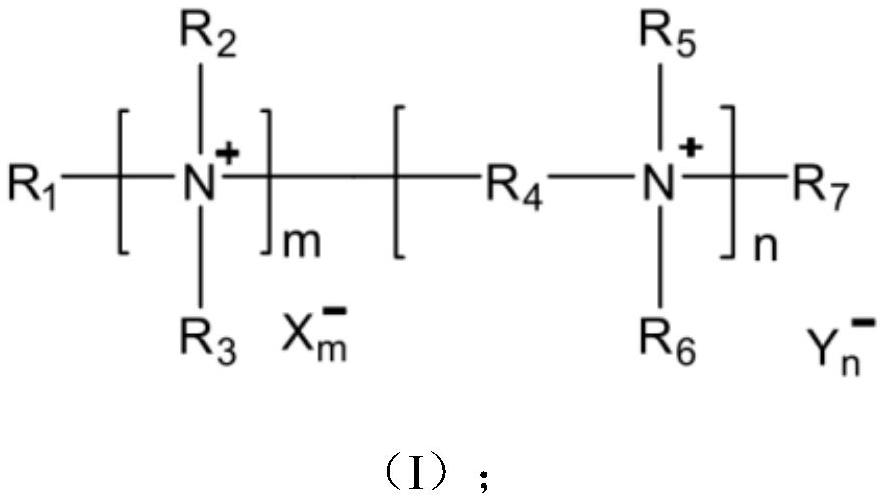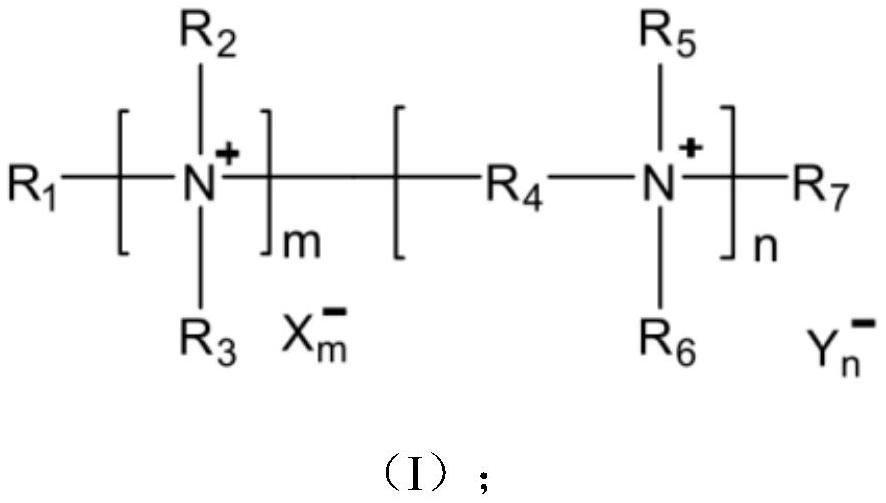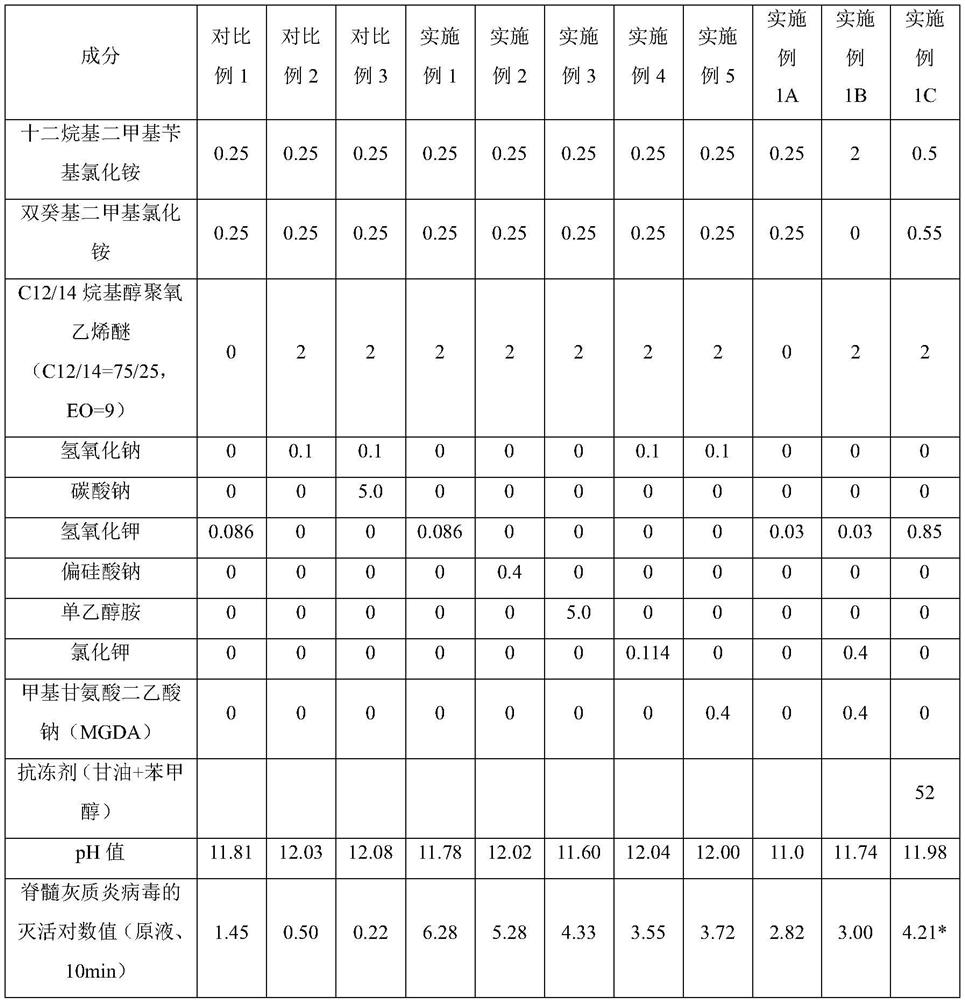Quaternary ammonium salt composition for killing microorganisms as well as preparation method and application of quaternary ammonium salt composition
A technology of quaternary ammonium salt and composition, which is applied in the field of quaternary ammonium salt composition for killing microorganisms and its preparation, can solve problems such as poor inactivation effect, explosion, and safety risks, and achieve safe and easy-to-kill treatment objects. Killing effect, effect with a wide range of applications
- Summary
- Abstract
- Description
- Claims
- Application Information
AI Technical Summary
Problems solved by technology
Method used
Image
Examples
Embodiment 1-17 and comparative example 1-3
[0212] The compositions of the quaternary ammonium salt composition Examples 1-17 and Comparative Examples 1-3 are shown in Table 1-3. After preparing the quaternary ammonium salt composition in proportion to each component, the stock solution of the quaternary ammonium salt composition was used to carry out the virus inactivation test test. The test method is:
[0213] The inactivation test of poliovirus was carried out with reference to the method of ""Technical Specifications for Disinfection" (2002 Edition), 2.1.1.10 Virus Inactivation Test". The degree of pollution of the target will affect the killing effect. Generally, 3% (W / V) bovine serum albumin stock solution is added during the experimental test. This condition represents a polluted scene, or even a severely polluted scene. Alternatively, for disinfection or cleaning only of cleaning items or instruments, a 0.3% (w / v) bovine serum albumin stock solution can be used. Unless otherwise specified, the test results of ...
Embodiment 2
[0224] Example 2, adjusting the pH to 12.02 with sodium metasilicate has a good inactivation effect on poliovirus, and the inactivation logarithm value is 5.28.
Embodiment 3
[0225] In Example 3, adjusting the pH to 11.60 with monoethanolamine has a good inactivation effect on poliovirus, and the inactivation logarithm value is 4.33.
[0226] Example 4 In the sodium hydroxide system of Comparative Example 2, potassium chloride was additionally added (the molar number of potassium ions was the same as in Example 1), and the inactivation logarithmic value of poliovirus was increased from 0.50 to 3.55, indicating that potassium ions There should be synergy. Example 5 Add ion / ligand sodium methylglycine diacetate with chelating effect to the sodium hydroxide system of Comparative Example 2, and the inactivation logarithm of poliovirus is increased from 0.50 to 3.72, indicating that methylglycine Sodium diacetate chelation acts synergistically in enhancing poliovirus inactivation.
[0227] It can be seen that in order to reduce the negative impact of sodium ions introduced by the alkaline agent of sodium source on the inactivation of poliovirus, potass...
PUM
 Login to View More
Login to View More Abstract
Description
Claims
Application Information
 Login to View More
Login to View More - R&D
- Intellectual Property
- Life Sciences
- Materials
- Tech Scout
- Unparalleled Data Quality
- Higher Quality Content
- 60% Fewer Hallucinations
Browse by: Latest US Patents, China's latest patents, Technical Efficacy Thesaurus, Application Domain, Technology Topic, Popular Technical Reports.
© 2025 PatSnap. All rights reserved.Legal|Privacy policy|Modern Slavery Act Transparency Statement|Sitemap|About US| Contact US: help@patsnap.com



